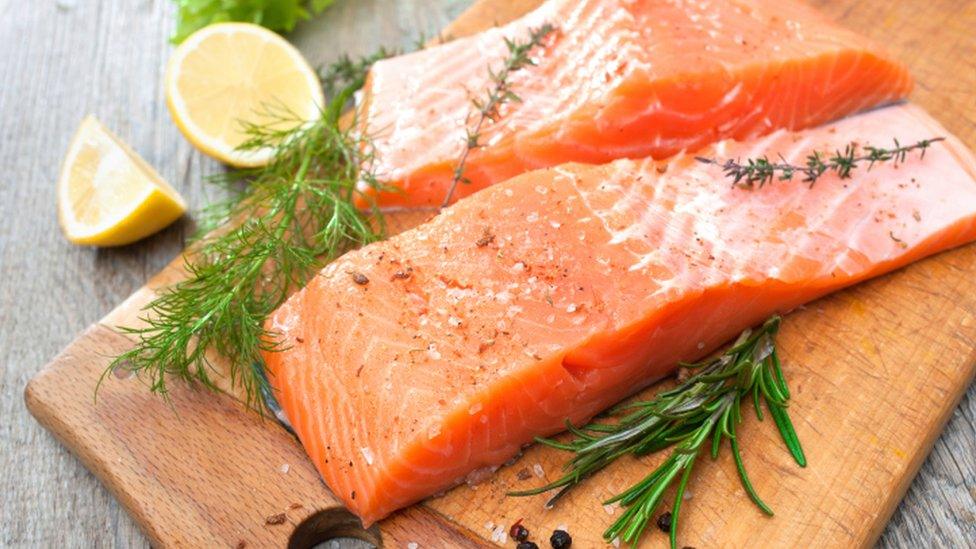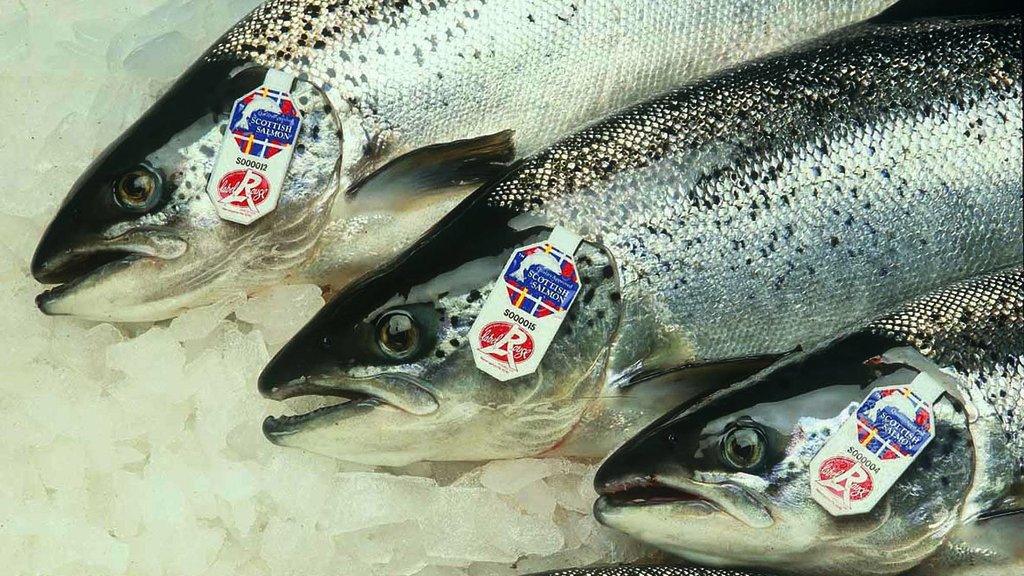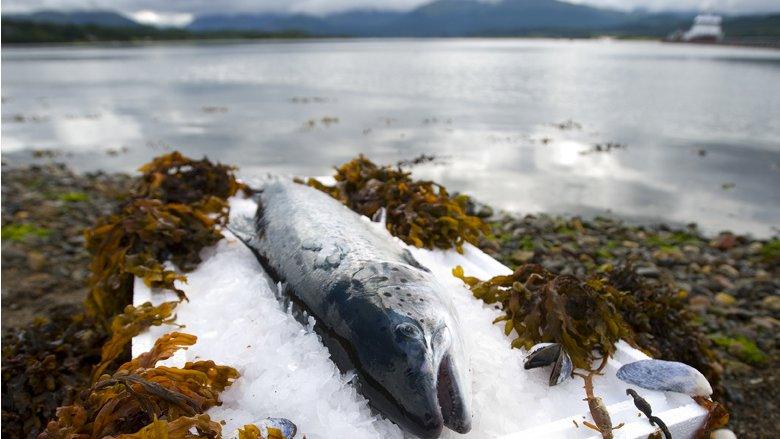Scottish salmon export sales 'drop by £100m'
- Published

Sales of Scottish salmon to the export market dropped by more than a fifth last year - losing the industry about £100m, according to the latest figures.
The figures from HMRC are provisional and cover the first 11 months of 2015.
Sales to the USA, Canada and the Far East were down by about a third, compared with the previous year.
The Scottish Salmon Producers' Organisation (SSPO) said the industry was looking to cut costs as a result of the drop in sales.
The official figures, being highlighted by the SSPO, showed that up until the end of November last year the world bought more than £353m worth of UK salmon, which is effectively fish reared in Scottish waters.
That figure was down a fifth on the 2014 figure of about £457m.
'Challenging year'
The volume of salmon sold to Europe rose slightly - from 33,438,830 kilos in 2014 to 34,158,300 kilos in 2015.
However, crucial markets in the USA and Canada and the Far East bought almost 30% less fish.
The SSPO said a Russian boycott had led to a surfeit of salmon on world markets.
The organisation also pointed to the strength of the pound against the Norwegian kroner - which it said made Scottish salmon more expensive than fish from Scotland's main competitors.
Speaking on BBC Radio Scotland's Good Morning Scotland programme, SSPO chief executive Scott Landsbourgh said: "There's no hiding from the fact that 2015 was a very challenging year for us.
"There are a number of reasons for that. Exchange rates were not in our favour. Our competitor countries had much lower values on their currencies than we had. And we had a glut of salmon on the international markets due to the Russian trade embargo.
"So these things conspired to make it a very tough year."
Mr Landsbourgh said the industry in Scotland was keen to grow in order to better meet the demands of markets such as the USA and China.
"They are the markets that really demand large fish all year round and that's where we have fallen a bit short because we can't fulfil that demand," he said.
"We need to get more sites - that's a key factor.
"We want to grow the industry more, in a sustainable way. We have good environmental standards and we want to work hard on them.
"We have an aspiration to grow by another 50,000 tonnes by 2020. Will we get there? That is the question."
- Published4 January 2016

- Published21 April 2015

- Published13 March 2015

- Published27 February 2015

- Published7 May 2014
